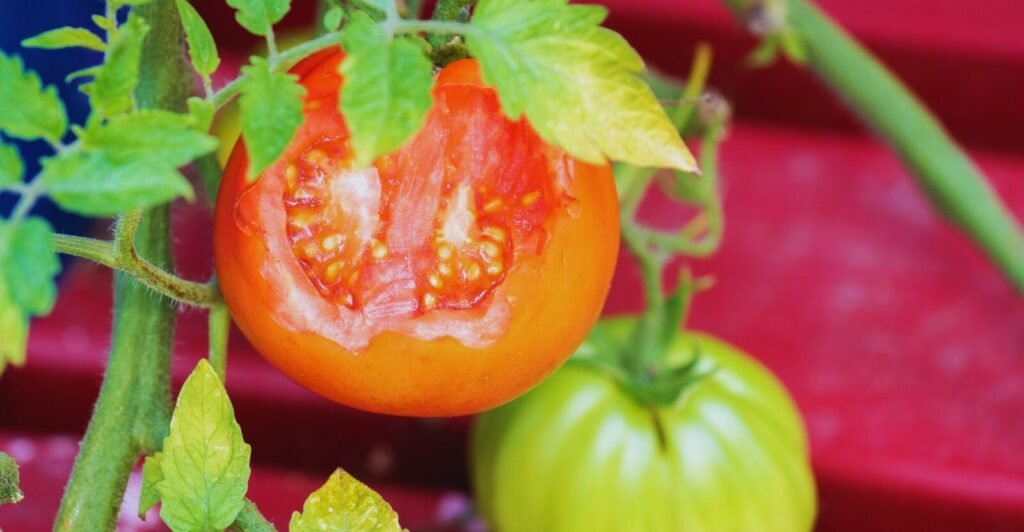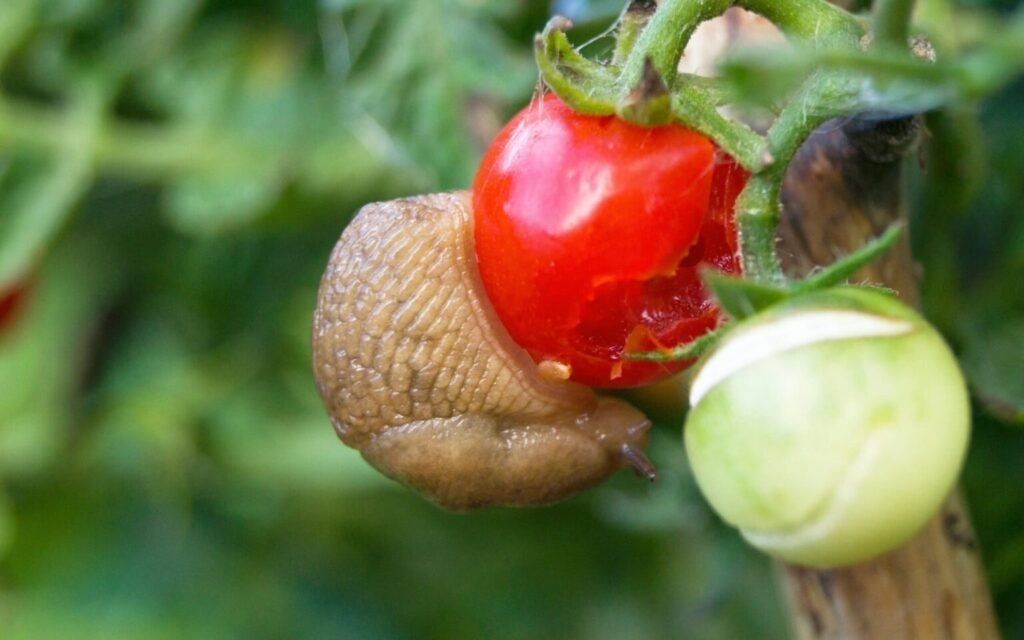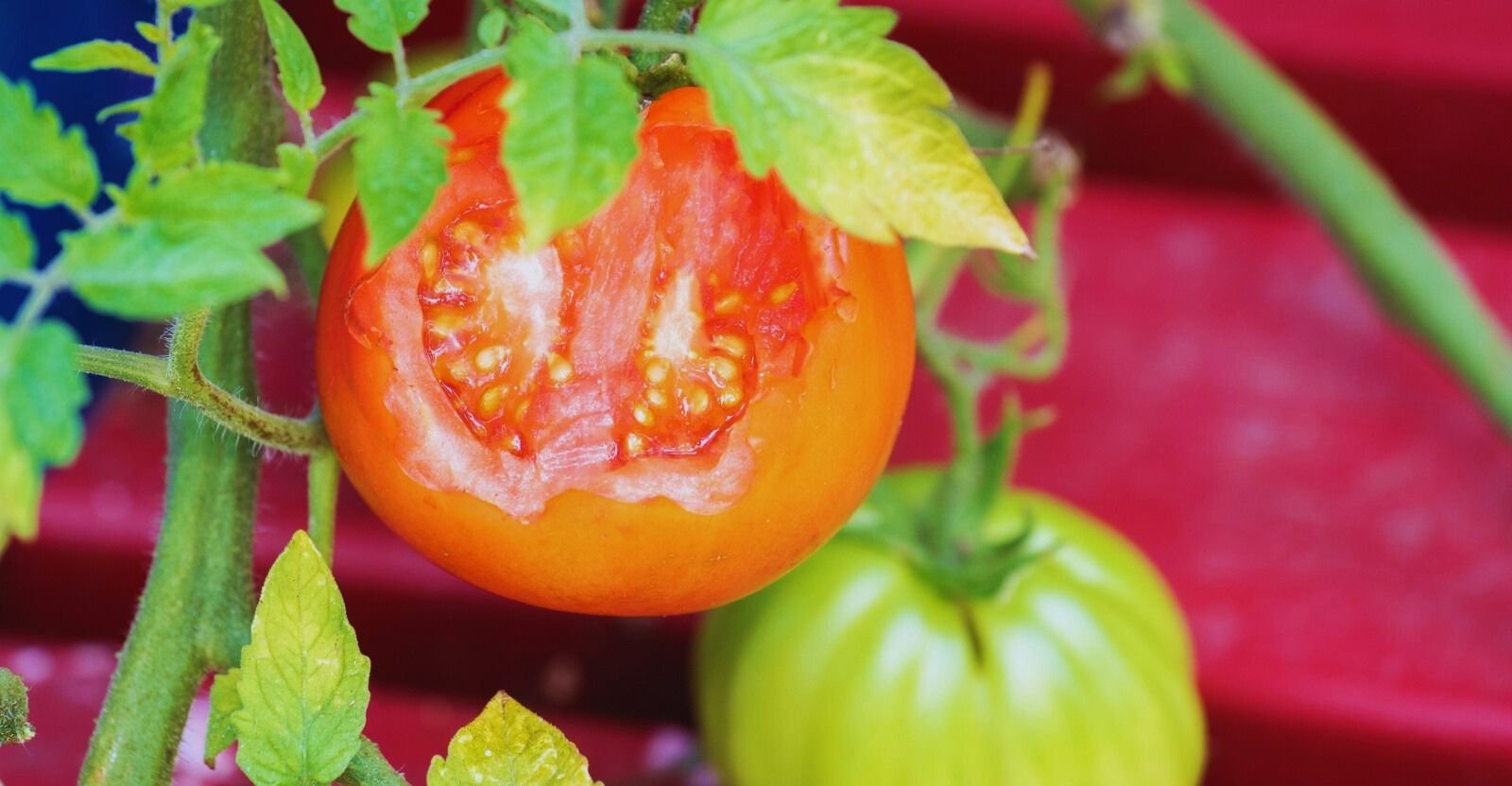
Tomatoes are a fantastic addition to any meal, whether you’re tossing them in a salad, making a dip, or grilling them with your favorite meat. But what do you do if you notice your tomato plants are being eaten? It’s frustrating to find that your hard work has been compromised by pests. If you’re wondering, “What is eating my tomatoes?” keep reading—this post covers all the possible culprits and the ways you can take control of the situation.
What’s Eating My Tomatoes at Night?
If your tomatoes are getting eaten at night, it’s most likely due to insects, small rodents, or even larger animals. Common culprits include corn earworms, stink bugs, snails, slugs, moth larvae, hornworms, fruit worms, mice, chipmunks, moles, potato beetles, rabbits, and deer. You’ll typically find that the tomatoes are either half-eaten while still on the vine or fully devoured and left on the ground.
To help identify the culprit, take a look at the table below for some common signs of damage:
| Pest | Damage Type |
|---|---|
| Stink Bugs | Deformed tomatoes due to small punctures on the skin and changes in color. |
| Cutworms | Damage to the foliage and small diameter holes in the tomatoes. |
| Tomato Hornworms | Large scars on the tomato skin. |
| Corn Earworms | Distorted leaves and deep holes in the tomatoes. |
| Tomato Fruitworms | Small deep holes in the plant, usually hiding inside the fruit. They also feed on the tips of leaves. |
| Snails and Slugs | Slimy trails around the fruit and leaves with several small holes in both. |
| Birds | Rough damage to the fruit, with seeds scattered on the ground. |
| Rabbits | Half-eaten fruits, often found fallen on the ground. |
| Deer | Big damage to both the plant and the fruit, often squished. |
How Can You Stop Bugs from Eating Your Tomato Plants?
As a gardener, you probably planted tomatoes hoping for fresh, ripe fruits. However, it’s not uncommon for pests to show up and cause damage. If you notice small holes or ragged edges on your plants, these could be caused by pests like hornworms, beet armyworms, or stink bugs. Sometimes the damage may appear minor on the outside, but the pests are actually destroying the fruit from within.
For example, I had a tomato plant that got infested with tomato fruit worms. These worms burrowed into the tomatoes, leaving slimy cavities filled with rotting pulp and waste.
But before you rush to buy an insecticide, try these strategies to handle the pests:
Slugs and Snails

Slugs and snails can wreak havoc on your tomato plants by feeding on the leaves and fruit. They prefer areas with recently cleared ground and will often hide under leaves or soil during the day.
How to Treat Slugs and Snails:
- Slug traps work great for catching and eliminating them. Lay old wooden boards on the soil to attract them, then remove them easily.
- Organic slug pellets can also help control their population. Just be sure to use them sparingly to avoid harming beneficial insects like earthworms.
- Coffee grounds sprinkled around the plants act as a natural deterrent for slugs and snails.
Cutworms
Cutworms are a common pest for tomato plants and other crops. These pests eat seeds, leaves, and fruit, often causing the foliage to turn yellow and die. They’re most active at night and will leave large holes in the fruit.
How to Treat Cutworms:
- Till the soil around your tomato plants and remove any debris where cutworms might hide.
- Cardboard plant collars around the base of your plants can prevent cutworms from reaching the stem.
- Manually remove cutworms by inspecting the plant and looking under leaves where they often hide.
- Neem oil can also help control cutworm populations without harming your plants.
Tomato Hornworms
Hornworms are devastating pests that can quickly destroy your tomato plants by feeding on both the leaves and fruit. These caterpillars have distinct “horns” at their backs and can grow up to four inches long before turning into adult moths.
How to Treat Tomato Hornworms:
- Manual removal is effective for small infestations. Just pick them off the plants and drop them into a bucket of soapy water.
- Organic insecticides like B.t (Dipel or Thuricide) or neem oil are also useful in controlling hornworms.
- Planting insect-repellent herbs like sage, basil, and marigolds can help keep hornworms away.
Potato Beetles
Despite their name, potato beetles don’t just affect potato plants—they love to munch on tomato plants too. These tiny beetles cause damage by eating the soft leaves and fruit of tomato plants.
How to Treat Potato Beetles:
- Neem oil or other insecticides can help manage the beetle population.
- Crop rotation is a good strategy to discourage beetles from settling in your garden.
- Manually remove the beetles if you spot them, or use fine mesh netting to protect your plants.
How Do You Protect Your Tomato Plants from Larger Animals?
Larger animals, like rabbits and deer, can cause quick and extensive damage to your tomato plants. Here’s how to deal with them:
Rabbits
Rabbits love to feed on the roots, leaves, and fruits of tomato plants. You’ll often notice bite marks on the fruit, with the fruit often found fallen on the ground. Rabbits are most active early in the morning and late in the evening.
How to Control Rabbits:
- Install a fence around your garden. Rabbits can’t jump higher than 2 feet, so a fence slightly higher than that will keep them out.
- Use rabbit traps to capture and relocate them.
- Let your pets like cats or dogs play outside in the morning or evening to scare rabbits off.
- Surround your plants with chicken wire or bird netting to create a barrier.
Deer
Deer enjoy munching on grass, fallen fruits, and will even nibble on your tomato plants if they’re hungry. You’ll often see deer damage when the plants are heavily eaten, or tomatoes are squashed on the vine.
How to Control Deer:
- Install a net fence around the garden to prevent deer from entering.
- Plant deer-repellent plants around your tomatoes, which can discourage them from coming too close.
- Mesh wire around the garden area can make it uncomfortable for deer to move around.
- Homemade deer repellent sprays or an automatic sprinkler system can help keep deer at bay.
Conclusion
Seeing your tomatoes being eaten by pests or animals is undoubtedly frustrating, but there are plenty of ways to protect your plants. The key is to identify the problem early and take action before the damage gets out of control. Whether it’s insects, slugs, or larger animals, there’s a strategy to handle each situation. Keep a close eye on your plants, and with the right tools and techniques, you’ll be able to protect your tomatoes and enjoy a bountiful harvest!

